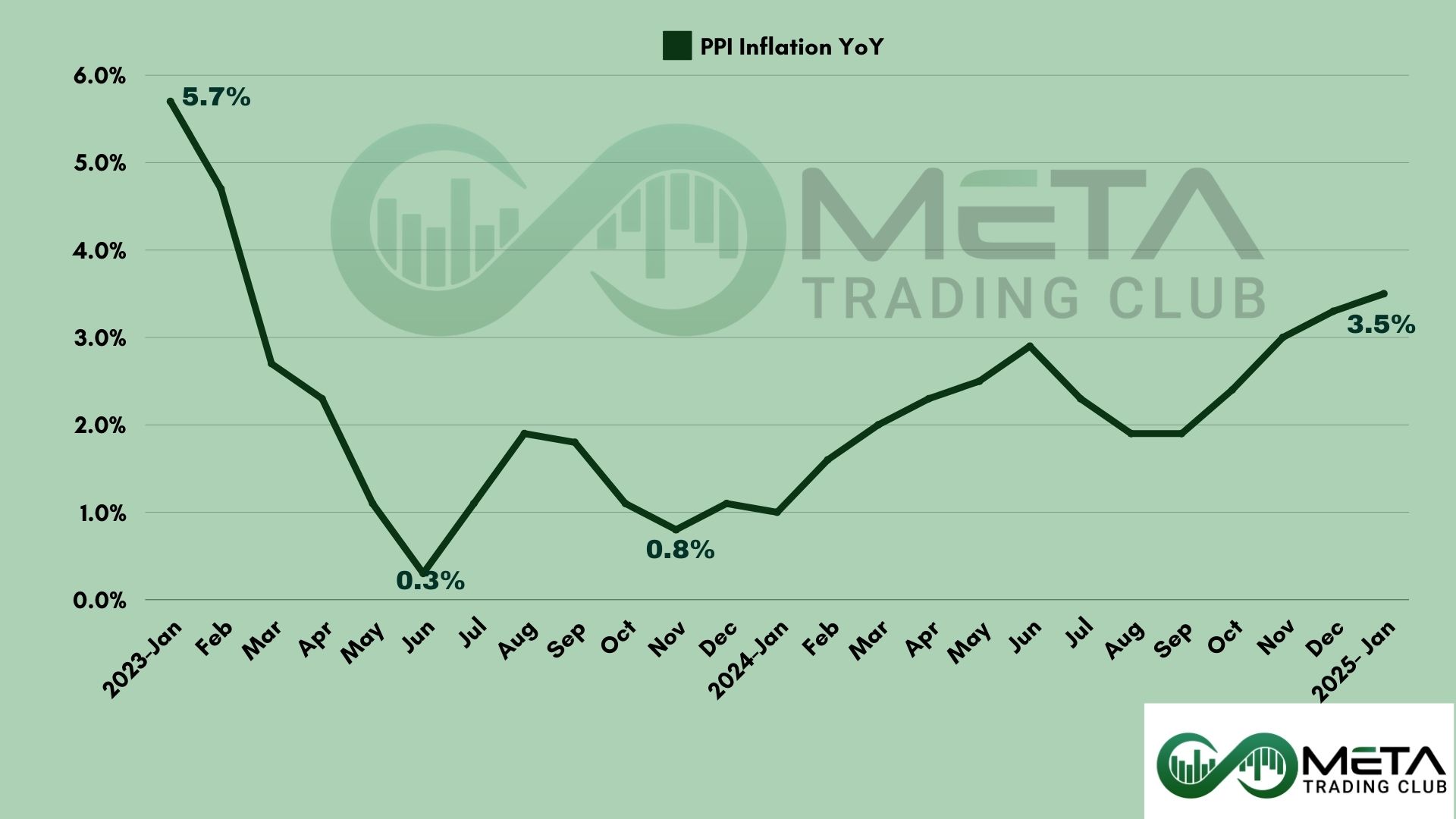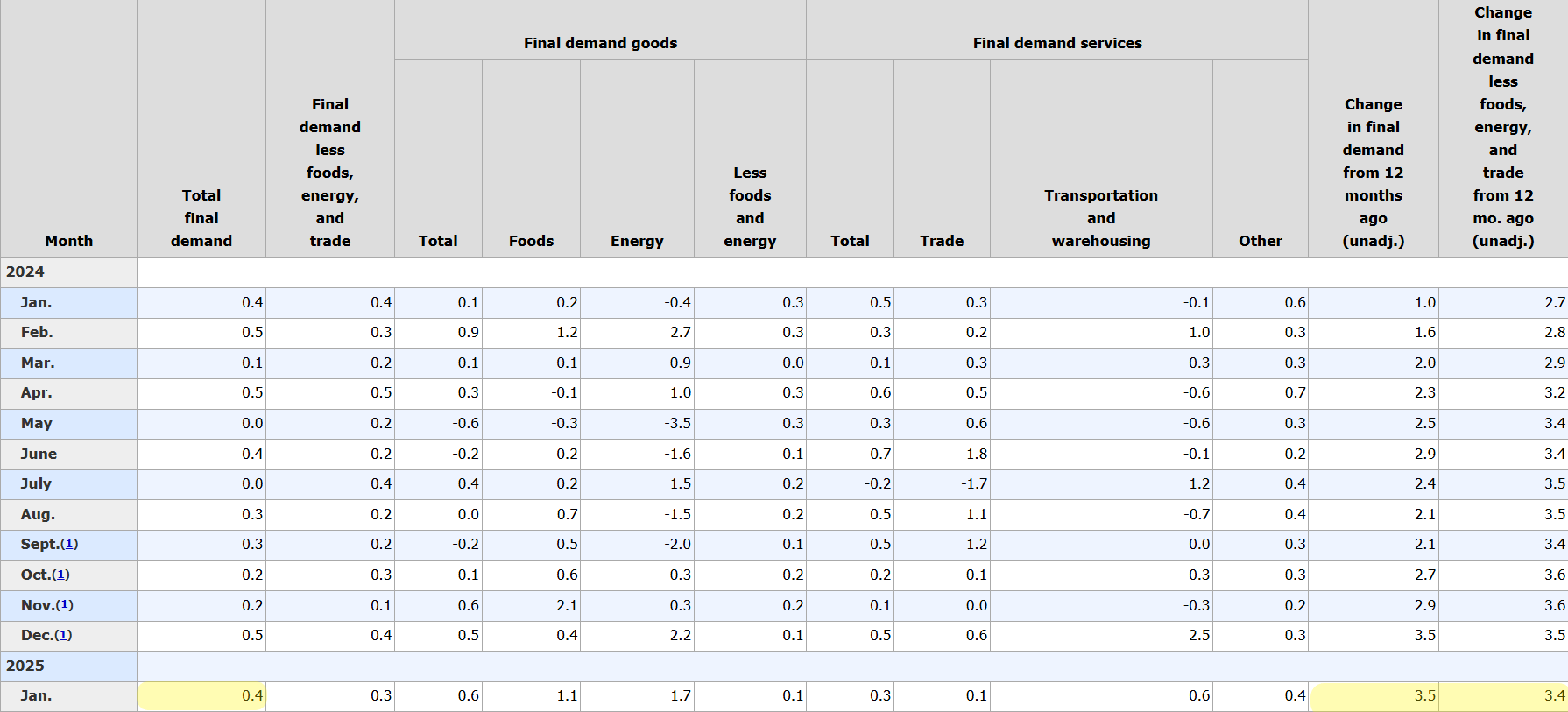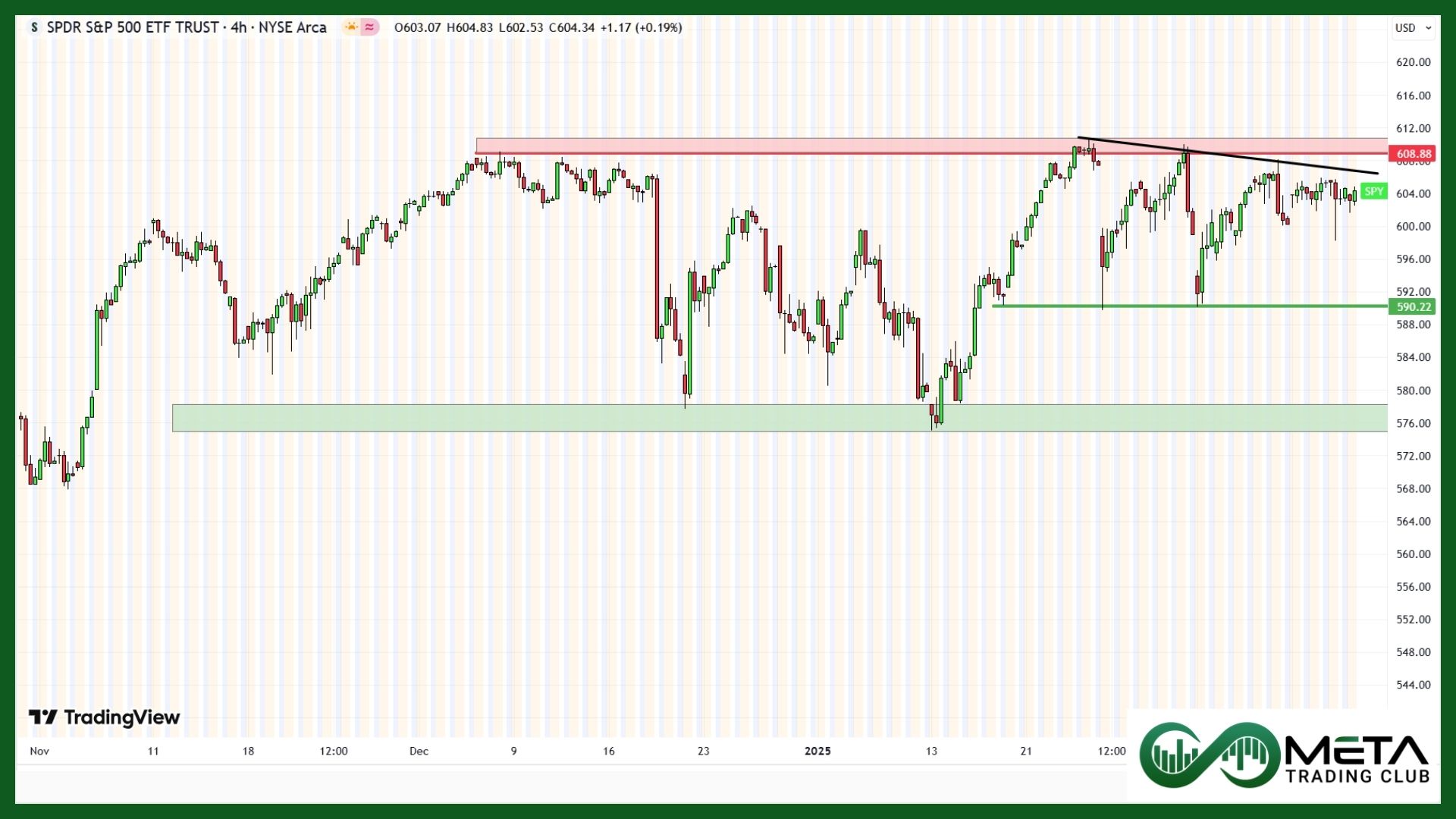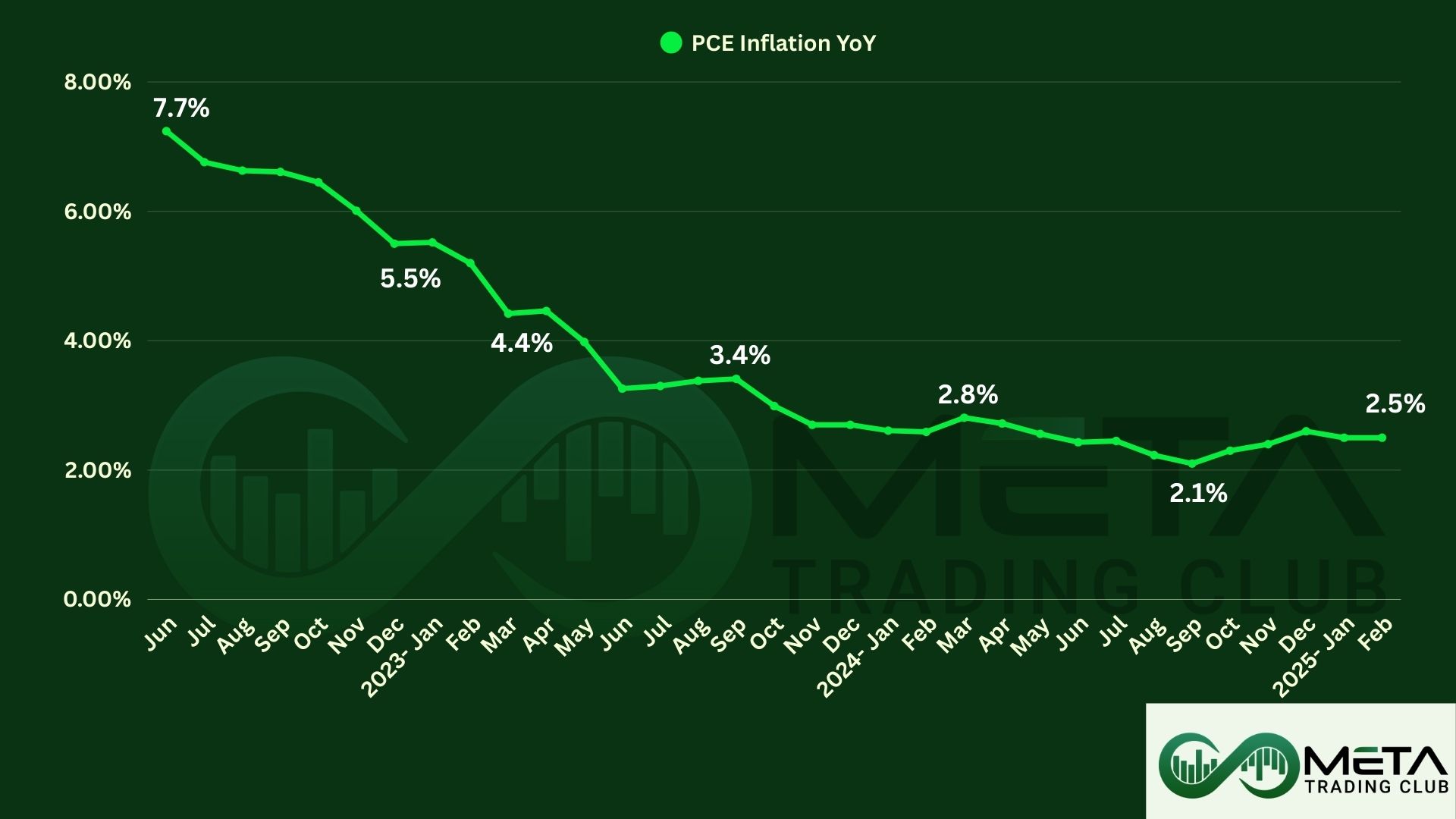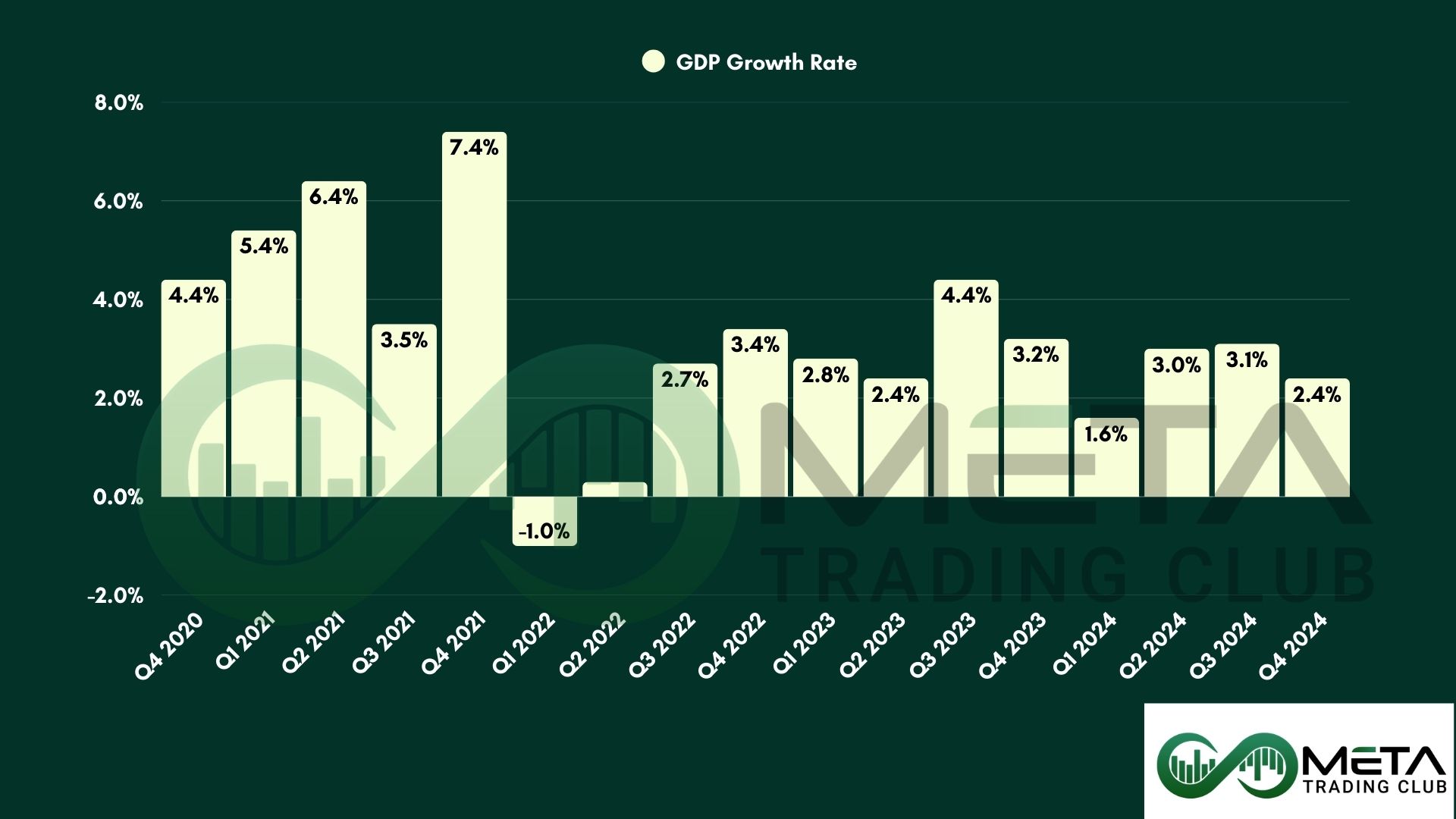The Producer Price Index (PPI) measures the average change over time in the prices that domestic producers receive for their goods and services. Also, it’s a key indicator of inflation at the wholesale level, reflecting price changes from the perspective of the seller rather than the consumer.
The Bureau of Labor Statistics (BLS) releases the Producer Price Index (PPI) report monthly, providing crucial insights into the average change over time in the selling prices received by domestic producers for their goods and services. The report is typically released around the 12th of each month at 8:30 AM Eastern Time. It includes data on various industry classifications, commodity classifications, and the Final Demand-Intermediate Demand system. These offer a comprehensive view of price changes across different sectors. This data is essential for economists, policymakers, and businesses to understand inflationary trends and make informed decisions.
January Producer Price Index
The Bureau of Labor Statistics reported that the Producer Price Index (PPI) for final demand increased by 0.4% in January. This followed a 0.5% rise in December and a 0.2% increase in November. Also, the final demand index rose by 3.5% for the 12 months ending in January 2025.
Key Highlights
- Final Demand Services: Prices increased by 0.3% in January, marking the sixth consecutive monthly rise. Notably, prices for final demand services excluding trade, transportation, and warehousing saw a 0.4% increase. Transportation and warehousing services, along with trade services, also recorded gains of 0.6% and 0.1%, respectively.
- Final Demand Goods: The index for final demand goods rose by 0.6% in January, with over half of this increase attributed to a 1.7% rise in prices for final demand energy. Prices for final demand foods and goods excluding foods and energy rose by 1.1% and 0.1%, respectively.
- Core PPI: Excluding foods, energy, and trade services, the core PPI increased by 0.3% in January, following a 0.4% rise in December 2024. For the 12 months ending in January 2025, core PPI advanced by 3.4%.
Image Source: U.S. Bureau of Labor Statistics
Impacts of January PPI Data on Market
The January PPI data showed a 0.4% rise in producer prices, raising concerns about ongoing inflation.
Also, higher energy and food prices are driving this increase, which could affect company profits and consumer spending.
Market experts think the Federal Reserve might delay lowering interest rates, keeping borrowing costs high. This news has caused more market volatility, with investors paying close attention to the Fed’s next steps.

